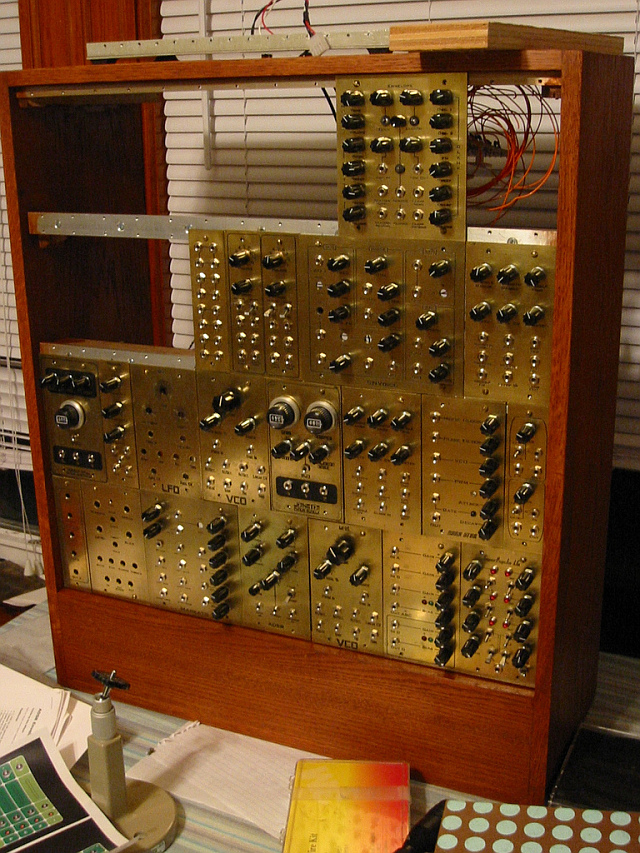Jules Vernian Analog Synthesizer
It makes me happy when people write me about things they’ve made, and when they’ve been inspired or have adopted techniques they’ve learned from the Steampunk Workshop it makes me very happy indeed!
Peter wrote me a while back with some pictures of his latest project, a Jules Verne inspired analog synthesizer with etched brass control panels. Now, I cut my teeth on a vinyl copy of Switched-On Bach and I’ve been a fan of analog synth heroes Tangerine Dream since High School. So I was very excited to see this.
. . .
Peter used the electrolytic etching process that I’ve previously worked with to etch the control panels for his synthesizer. The synth is designed to be modular and re-configurable so Peter was looking for a process that could be repeated in-house at any time in the future should he wish to add or change modules.
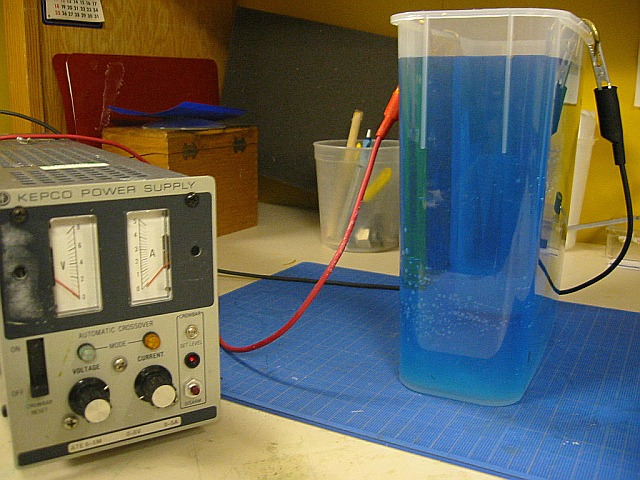
He used the same electrolytic etching process I used for the Moleskine journals, but he’s made some really clever plate holders that probably worked much better then the duct tape I used!

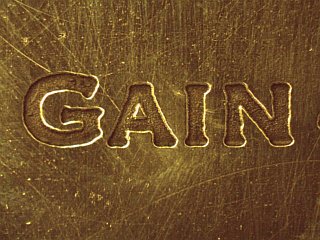
I asked Peter if he was willing to do a little Q&A for us and he most graciously agreed!
SPWS: While I’ve heard and enjoyed music from analog synths for most of my life, I fear I know little about how they work. For instance, where’s the keyboard?
Peter: I don’t have any plans to add a keyboard to the setup anytime soon. Being an electronic instrument the control interface is somewhat arbitrary. I feel that the piano-keyboard paradigm forces you to approach the instrument with a mind set that is deeply rooted in western musical tradition and therefore has some baggage attached to it.
I’m more interested in creating an open ended music system that encourages exploration and discovery and not be limited by the twelve notes of the western scale. The idea being that this system is an experimental sound generating engine, with all parameters for shaping the sounds available as panel controls. I’m not so interested in sitting down and playing a melody on a keyboard. If that were the case I could have just bought a Casiotone and been done with it.
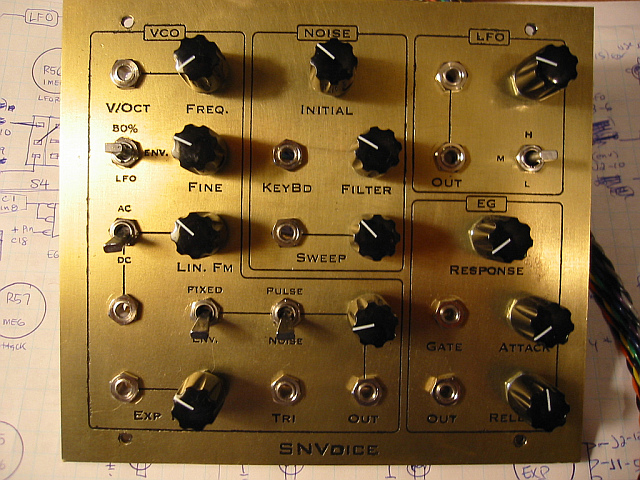
SPWS: What do some of these modules do? For instance the one pictured here and labeled ‘SNVoice’ ?
Peter: The SNVoice is a sound module based around an old Texas Instruments sound chip, the SN76477. It was produced in the late ’70’s and was mostly used to provide sound effects in video arcade games. If you’ve ever played the original stand-up console version of Space Invaders you’ve heard the SN76477 in action.
Its actually a self-contained synthesizer on a chip. So the SNVoice module brings all its features out to a control panel, brings signal levels in line with modular synth standards, and even more amazing, provides additional circuitry that allows the oscillator to track accurately over a range of five octaves. Of course, it also makes some great Atari style bleeps and bloops and has an awesome digital noise source.
The SNVoice was designed by Thomas Henry whose been designing synthesizer circuits and making them available to DIYers since the early 80s. More info on the SNVoice is available here.
Synthesize in the context used here means to build up from simpler components and that is what you are essentially doing. Each module is an independent circuit that you interconnect with other circuits through the use of patch cables. This give you enormous flexibility and control over the sounds that you can make.
In very general terms, there are basically three varieties of modules: modules that make sound (oscillators, noise sources), modules that modify sound (change harmonic content or amplitude, for instance) and modules that provide voltages to control the parameters of other modules.
In addition to the basic core synthesizer modules that would typically make up a basic synth (oscillators, filters, envelope generators and amplifiers), I’m trying to include more unusual circuits that have no equivalent in your average commercial keyboard based synthesizer. For instance I’m currently building a circuit by Ken Stone called a Pulse Divider. You feed it a clock signal (which is typically used as a timing control element) and have simultaneously available several integer divisions between 2 and 8 of the original pulse. These can be recombined in various combinations (and will still retain a relationship with the original signal) — very useful for creating poly-rhythms and complicated evolving sequences. So, in effect, you’ve taken a steady clock ‘beat’ and broken it into a much more complex rhythmic sequence.
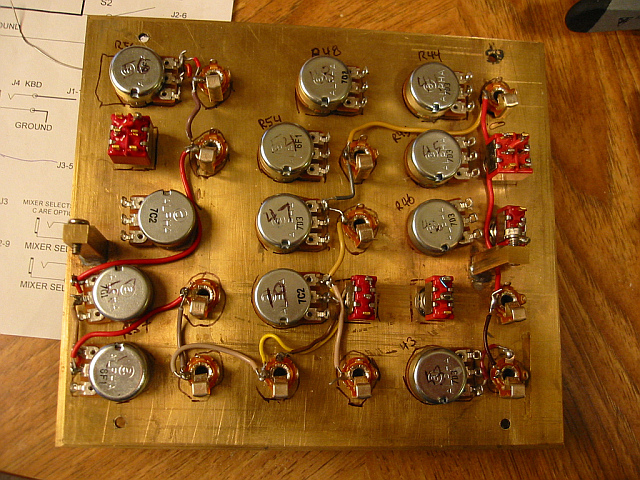
SPWS: did you design these circuits yourself ?
Peter: No. Some of these circuits are scratch built from 70’s era synthesizer DIY publications (Electronotes, Synapse, Polyphony). The majority are built on professionally made pcbs from online suppliers serving the DIY community. Others are limited production runs organized by other DIYers through internet forums.
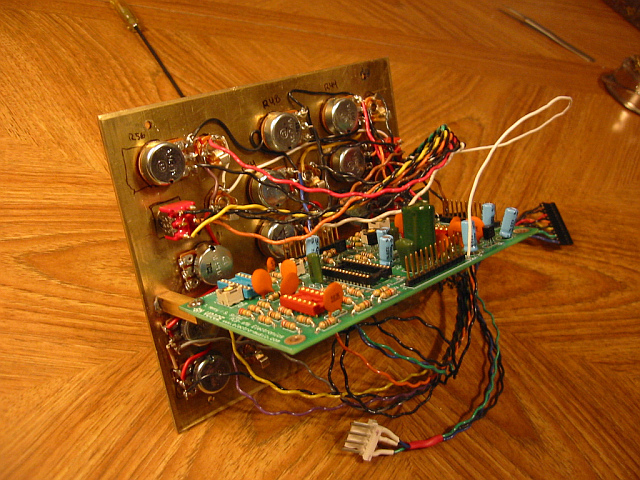
SPSW: If someone wanted to start playing around with analog synth gear, can you suggest a good resource to get started with? Perhaps a kit maker or DIY site?
Peter: Sure. I would heartily recommend Ray Wilson’s site, Music from Outer Space and Ken Stones CGS site. Both of these websites are amazing resources. Both Ken and Ray are really friendly and helpful. Both have PCBs for sale, but also freely offer the schematics if you don’t want to buy the boards.
Pcbs and kits are also available from Blacet Research, Synthesizer Technology, and Paia. A great community and forum exists over at Electro-Music.com. I can’t say enough about the folks over there.

SPWS: Where did you learn your mad crafting skillz? Do you do such work professionally?
Peter: I’ve been making stuff since I was a kid. My father is very handy and has a decent workshop and both of my grandfathers were also very skilled (one was a mechanic and the other made fine furniture). So working with my hands was demystified from a very early age. As a kid I was interested in horror and science fiction which lead to an interest in movie special effects. So I was always building stop motion puppets or doing make-up effects for my friends super-8 movies. Later I went to art school and studied Industrial Design which included a fair amount of model making. These days I work in R & D and am constantly having to improvise with odds and ends. I also have full access to a machine shop, so that helps a lot.
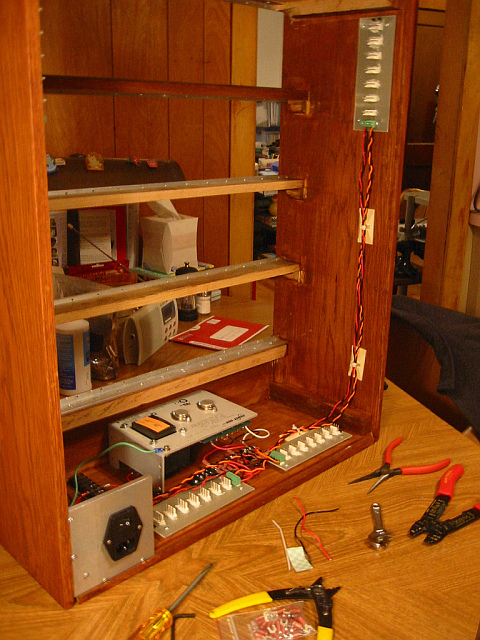
SPSW: This is such a gorgeous piece of equipment and it looks nearly done! Has this process energized you to go on to more and bigger things? or are you done for a while!
Peter: Thanks! Well I’m not sure if it will ever be done! I think it will probably spill over into a second cabinet at some point. I imagine that I’ll get to a point where I’m spending less time building and more time playing and getting to know the system. But to tell you the truth I’m never really truly happy unless I’m building something, so I think there will always be a project on the bench.
Peter, thank you so much for taking the time to speak with us! More information can be found on the project on Peter’s Blog.
Before we get to the final ‘glamour shot’ here a short video demonstrating the sounds this beauty makes:
